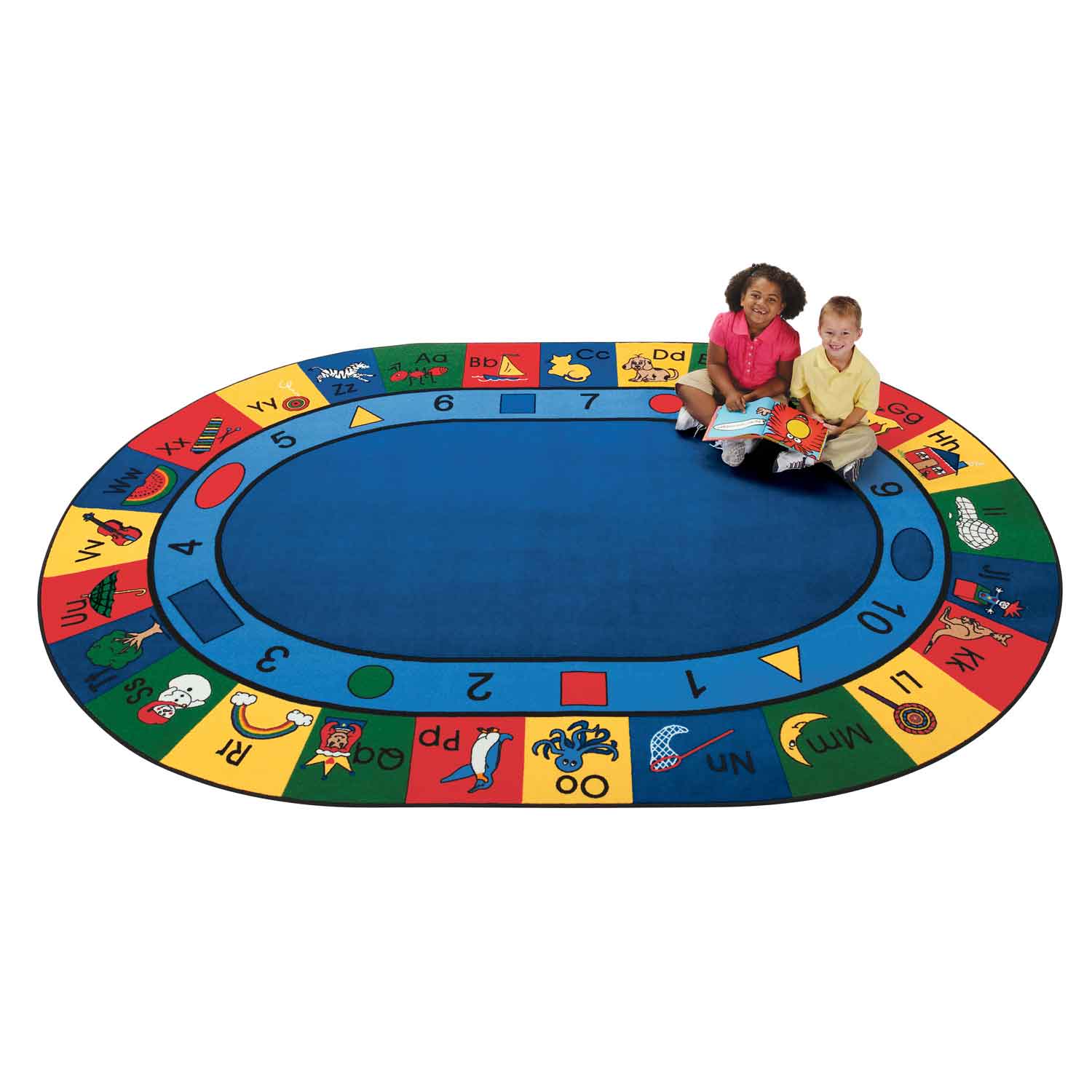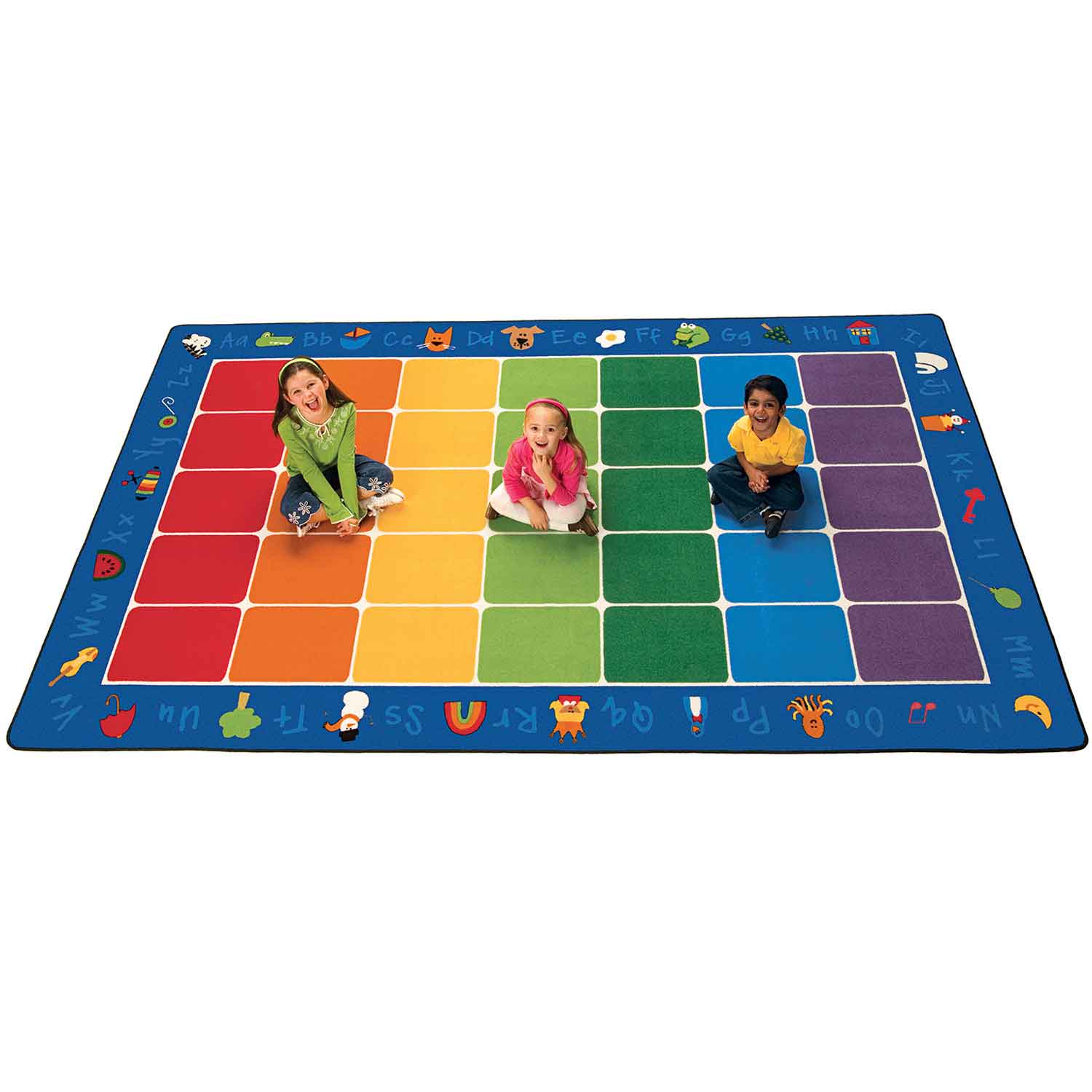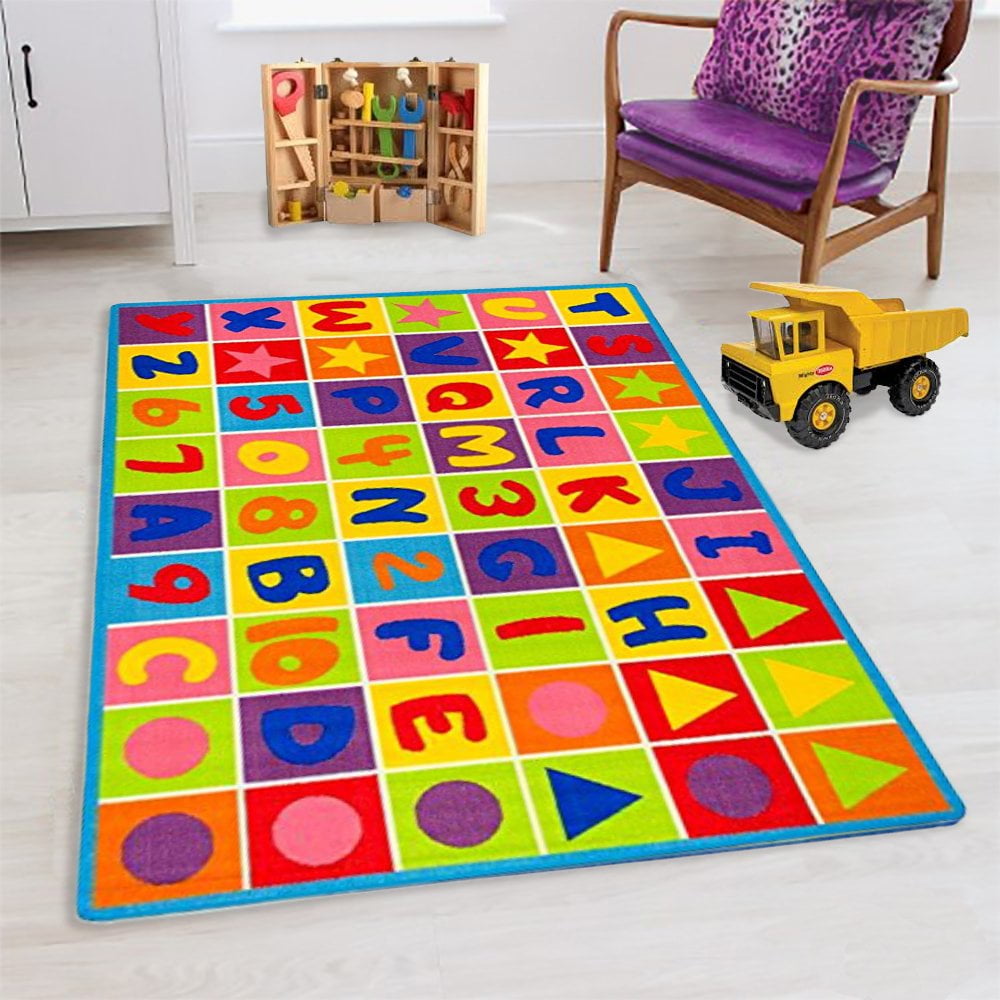Educational rugs for classrooms are not your average floor coverings; they are pedagogical powerhouses designed to transform learning spaces into engaging and interactive environments. These specially crafted rugs go beyond aesthetics, offering a myriad of benefits that support cognitive growth, literacy, numeracy, and social-emotional development.
From vibrant world maps to interactive number lines, educational rugs captivate young minds and provide a foundation for countless learning adventures. Dive into this comprehensive guide to discover the types, benefits, design considerations, and effective integration of educational rugs in classrooms, ensuring your students have a rug-gedly good time while they learn.
Educational Rugs
Educational rugs are specialized floor coverings designed to enhance learning environments in classrooms and educational settings. They incorporate educational content and interactive elements that support children’s cognitive, physical, and social development.Unlike traditional rugs that primarily serve aesthetic purposes, educational rugs are pedagogical tools that actively engage children in the learning process.
They feature vibrant colors, engaging patterns, and interactive designs that stimulate curiosity and foster exploration.
Characteristics of Educational Rugs
* Interactive Elements:Educational rugs often include interactive elements such as letters, numbers, shapes, maps, and games that encourage children to explore and learn through play.
Educational Content
Educational rugs for classrooms can enhance learning environments, providing interactive and engaging surfaces for students. If you’re interested in exploring educational advancements, consider attending international education conferences 2024 to connect with educators and learn about innovative teaching practices. Upon your return, you can incorporate new ideas into your classroom, including the effective use of educational rugs to foster a dynamic and supportive learning space.
These rugs present educational content in an engaging and accessible format, covering various subjects such as literacy, math, science, social studies, and art.
Durable Materials
Educational rugs are typically made from durable materials that can withstand the wear and tear of classroom environments, ensuring longevity and cost-effectiveness.
Non-Slip Backing
To ensure safety, educational rugs often feature non-slip backing to prevent slipping and accidents.
Age-Appropriate Designs
Educational rugs are designed to cater to different age groups, with varying levels of complexity and educational content to match the developmental needs of children.
Types of Educational Rugs
Educational rugs are designed to create engaging and interactive learning environments in classrooms. They come in a wide range of types, each with its own unique features, designs, and purposes.
Some of the most common types of educational rugs include:
Alphabet Rugs
- Feature the letters of the alphabet in a colorful and engaging design.
- Help students learn letter recognition, letter sounds, and spelling.
Number Rugs
- Display numbers and number patterns in a fun and interactive way.
- Assist students in developing number recognition, counting skills, and basic math concepts.
Shape Rugs
- Showcase different shapes and their properties.
- Enhance students’ spatial reasoning, shape recognition, and geometry skills.
World Map Rugs, Educational rugs for classrooms
- Depict the world map with accurate geographical details.
- Introduce students to different countries, continents, and oceans.
Solar System Rugs
- Display the planets of the solar system and their relative positions.
- Encourage students’ curiosity about space and astronomy.
Animal Rugs
- Feature various animals and their habitats.
- Promote animal recognition, classification, and knowledge of different ecosystems.
Story Rugs
- Depict scenes from popular children’s stories or fairy tales.
- Encourage imaginative play, storytelling, and literacy skills.
Benefits of Educational Rugs in Classrooms
Educational rugs are a valuable tool for creating a stimulating and engaging learning environment in classrooms. They offer numerous benefits that support children’s cognitive, literacy, numeracy, and social-emotional development.
Rugs provide a designated space for different activities, such as reading corners, math centers, and play areas. This helps children develop a sense of organization and structure, which is essential for their learning and development.
Educational rugs are a great way to add color and fun to any classroom. They can also be used to teach children about different subjects, such as geography, math, and science. For more information about educational resources for children in Bangladesh, check out the ministry education of bangladesh.
Educational rugs can also help children develop their fine motor skills and hand-eye coordination. They are a great way to make learning fun and engaging for all students.
Cognitive Development
Educational rugs can enhance cognitive development by providing children with visual and tactile stimuli. Rugs with patterns, shapes, and colors help children develop their visual discrimination and spatial reasoning skills. Rugs with different textures encourage tactile exploration, which helps children develop their sensory awareness.
Educational rugs for classrooms can brighten up any learning space and make it more inviting. They are also a great way to teach kids about different subjects, like math, science, and geography. If you’re looking for a way to make your classroom more engaging, consider investing in some educational rugs.
And for those working in the healthcare field, don’t forget to stay up-to-date with your certified nurse aide annual in-service education to enhance your skills and knowledge. By incorporating educational rugs and continuing your professional development, you can create a dynamic and supportive learning environment for both students and healthcare professionals.
- Example: A rug with a map of the world can help children learn about geography and different countries.
- Example: A rug with a number line can help children learn about numbers and counting.
Literacy
Educational rugs can support literacy development by providing a comfortable and inviting space for reading. Rugs with printed letters, words, and stories encourage children to engage with language and develop their reading skills.
- Example: A rug with a storybook character can inspire children to read and create their own stories.
- Example: A rug with a library theme can create a cozy and inviting reading nook.
Numeracy
Educational rugs can also support numeracy development by providing children with hands-on experiences with numbers and math concepts. Rugs with number grids, counting squares, and math games help children develop their number sense and mathematical reasoning skills.
- Example: A rug with a 100-square grid can help children learn about place value and skip counting.
- Example: A rug with a math game board can encourage children to practice math skills while having fun.
Social-Emotional Learning
Educational rugs can also promote social-emotional learning by providing children with opportunities to interact with each other and develop their social skills. Rugs with different colors and designs can create a welcoming and inclusive atmosphere, encouraging children to feel comfortable and respected.
- Example: A rug with a peace sign can help children learn about empathy and conflict resolution.
- Example: A rug with a group of children playing together can encourage children to develop their social skills.
Design Considerations for Educational Rugs
Educational rugs are more than just colorful floor coverings; they are designed to enhance the learning environment and support the curriculum. When selecting rugs for your classroom, it is essential to consider the design elements that can influence their effectiveness and appeal.
Key design considerations include:
Color
- Bright and cheerful colors can create a stimulating and engaging atmosphere.
- Subtle and calming colors can promote focus and concentration.
- Choose colors that complement the classroom décor and curriculum.
Pattern
- Geometric patterns can help students develop spatial awareness and problem-solving skills.
- Animal prints or nature-inspired patterns can foster curiosity and a connection to the environment.
- Consider the scale and complexity of the pattern in relation to the size of the classroom and the age of the students.
Texture
- Soft and plush textures can create a cozy and inviting space for young learners.
- Durable and easy-to-clean textures are essential for classrooms with high traffic.
- Consider the texture of the rug in relation to the activities that will take place on it.
By carefully considering these design elements, you can select educational rugs that not only enhance the aesthetics of your classroom but also support the learning process and create a positive and engaging environment for your students.
Classroom Integration of Educational Rugs
To effectively integrate educational rugs into the classroom environment, it’s crucial to consider their placement and intended use. Strategically position rugs in areas where students can engage with them easily, fostering a dynamic and interactive learning experience.
Educational rugs can serve as designated learning centers, offering specific areas for group work, independent study, or hands-on activities. By creating distinct zones within the classroom, rugs help students stay organized and focused on their tasks.
Using Rugs as Visual Aids
Educational rugs can also serve as powerful visual aids, enhancing the visual appeal of the classroom while reinforcing key concepts. Choose rugs with vibrant colors, engaging designs, and educational content that aligns with the curriculum. This visual stimulation captures students’ attention and provides constant exposure to learning materials, promoting retention and understanding.
Table: Examples of Rug Use in Different Subject Areas
| Subject | Rug Use |
|---|---|
| Math | Number lines, multiplication tables, geometric shapes |
| Science | Animal habitats, plant life cycles, solar system |
| Language Arts | Alphabet, sight words, grammar concepts |
| Social Studies | Historical maps, timelines, cultural symbols |
Care and Maintenance of Educational Rugs
Preserving the quality and extending the lifespan of educational rugs is crucial for maintaining their educational value and enhancing the classroom environment. Proper care and maintenance practices ensure that these rugs remain visually appealing, durable, and effective learning tools.
Regular cleaning and maintenance are essential to remove dirt, dust, and spills that can accumulate over time. The frequency of cleaning depends on the type of rug, the level of foot traffic, and the presence of spills or stains.
Recommended Cleaning Methods
- Vacuuming:Regular vacuuming removes loose dirt and dust, preventing it from becoming embedded in the rug fibers.
- Spot cleaning:Immediate attention to spills and stains can prevent permanent damage. Use a clean cloth or sponge with a mild detergent solution to blot up spills and stains.
- Professional cleaning:For deep cleaning and removal of stubborn stains, consider professional cleaning services. They use specialized equipment and cleaning solutions to restore the rug’s appearance and extend its life.
Recommended Materials
- Soft cloths or sponges:Use soft, non-abrasive materials to avoid damaging the rug fibers.
- Mild detergent solutions:Use a mild dish soap or laundry detergent mixed with water. Avoid harsh chemicals or bleach.
- Clean water:Use clean water to rinse the rug after cleaning to remove any detergent residue.
Additional Tips
- Rotate the rug:Regularly rotating the rug helps distribute wear evenly, extending its lifespan.
- Avoid excessive moisture:Do not over-wet the rug during cleaning, as this can damage the backing or cause mold growth.
- Dry thoroughly:After cleaning, ensure the rug is completely dry before placing it back in the classroom.
By following these care and maintenance practices, you can preserve the educational value, enhance the aesthetics, and extend the lifespan of your educational rugs, creating a supportive and engaging learning environment for students.
Final Review
Incorporating educational rugs into classrooms is not just about adding a splash of color; it’s about creating a dynamic learning environment that empowers students to explore, discover, and grow. By carefully selecting and integrating these pedagogical gems, educators can transform their classrooms into vibrant and engaging spaces where learning becomes an adventure.
Q&A: Educational Rugs For Classrooms
What makes educational rugs different from regular rugs?
Educational rugs are designed with specific learning objectives in mind, featuring interactive elements, patterns, and designs that promote cognitive development and skill-building.
How can educational rugs support literacy?
Rugs with alphabet patterns, letter recognition games, and story-based designs encourage letter and word recognition, fostering a love for reading.
What are the benefits of using educational rugs in math lessons?
Rugs with number lines, counting grids, and geometric shapes provide hands-on experiences that enhance numeracy skills and spatial reasoning.
How do educational rugs promote social-emotional learning?
Rugs with designated seating areas, role-playing designs, and calming colors create a positive and inclusive classroom atmosphere, fostering social interactions and emotional regulation.


